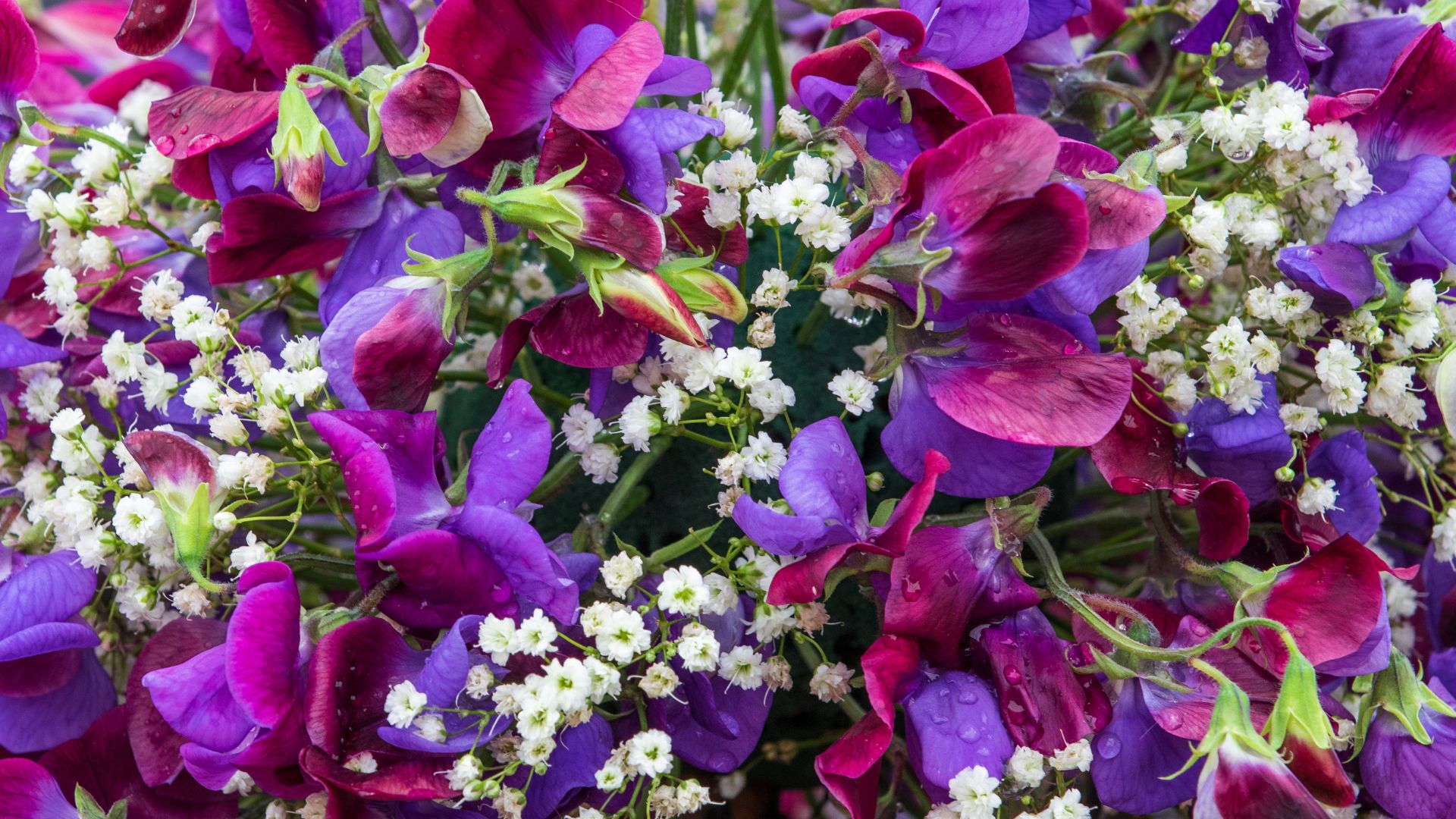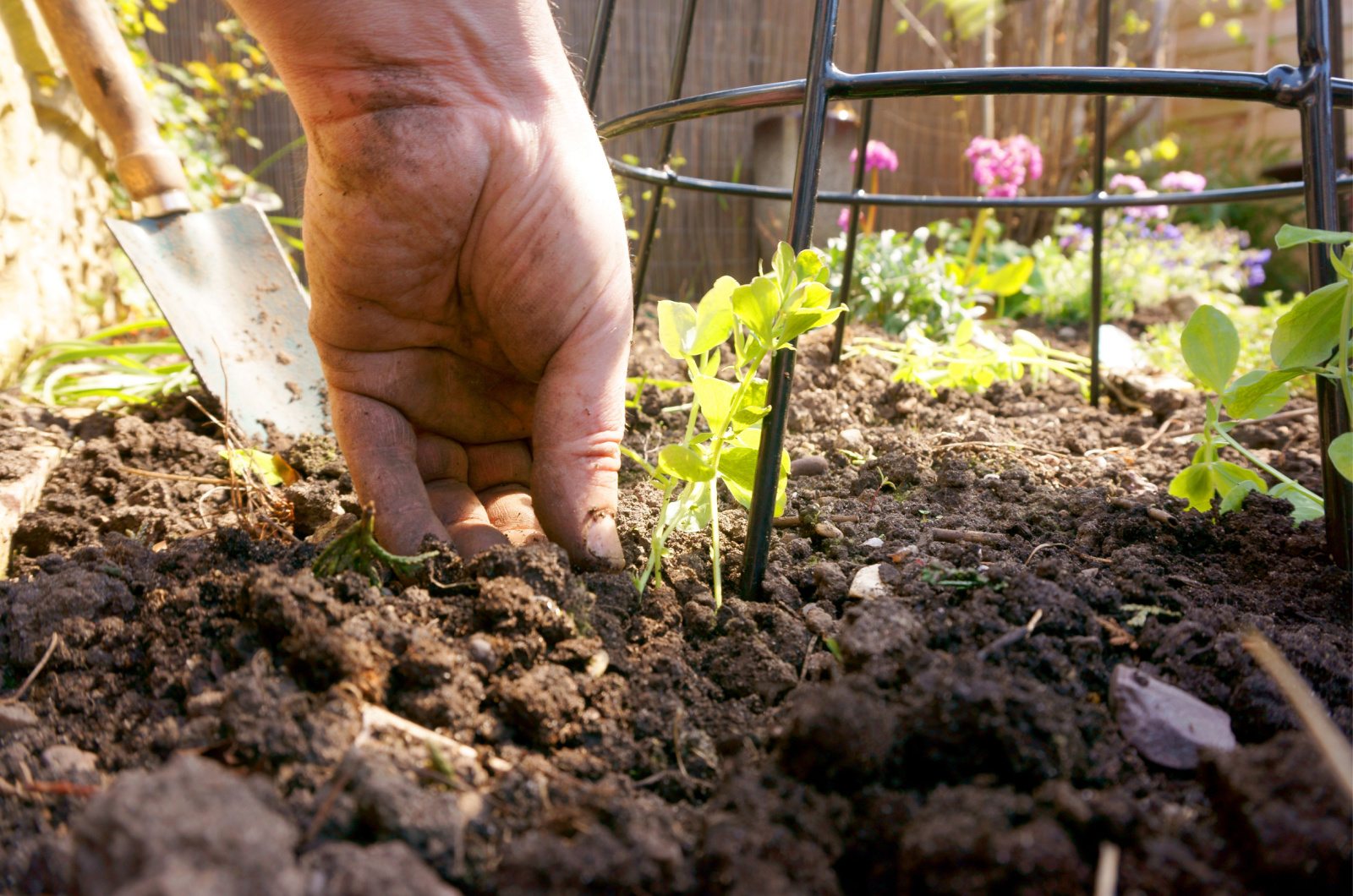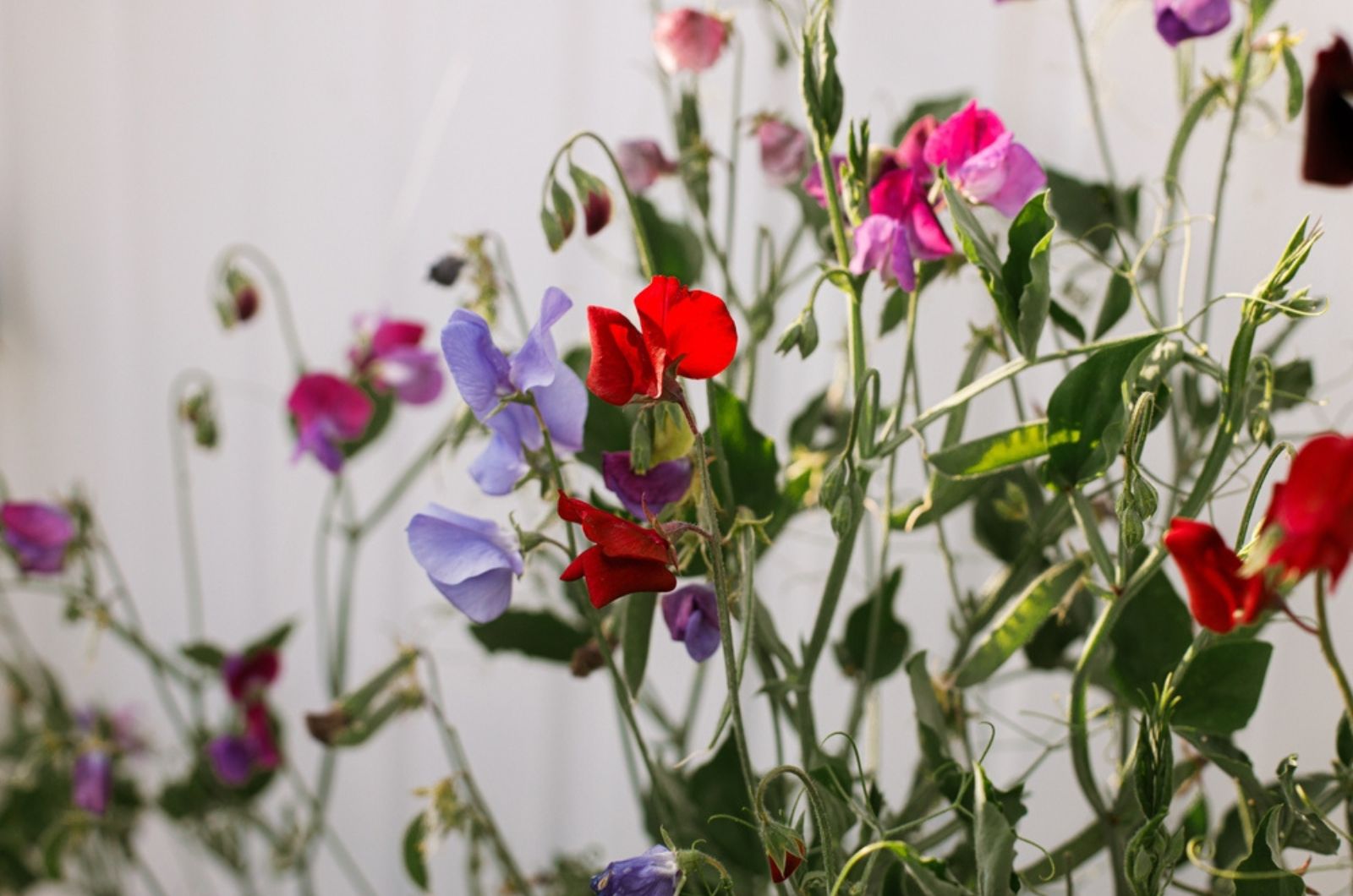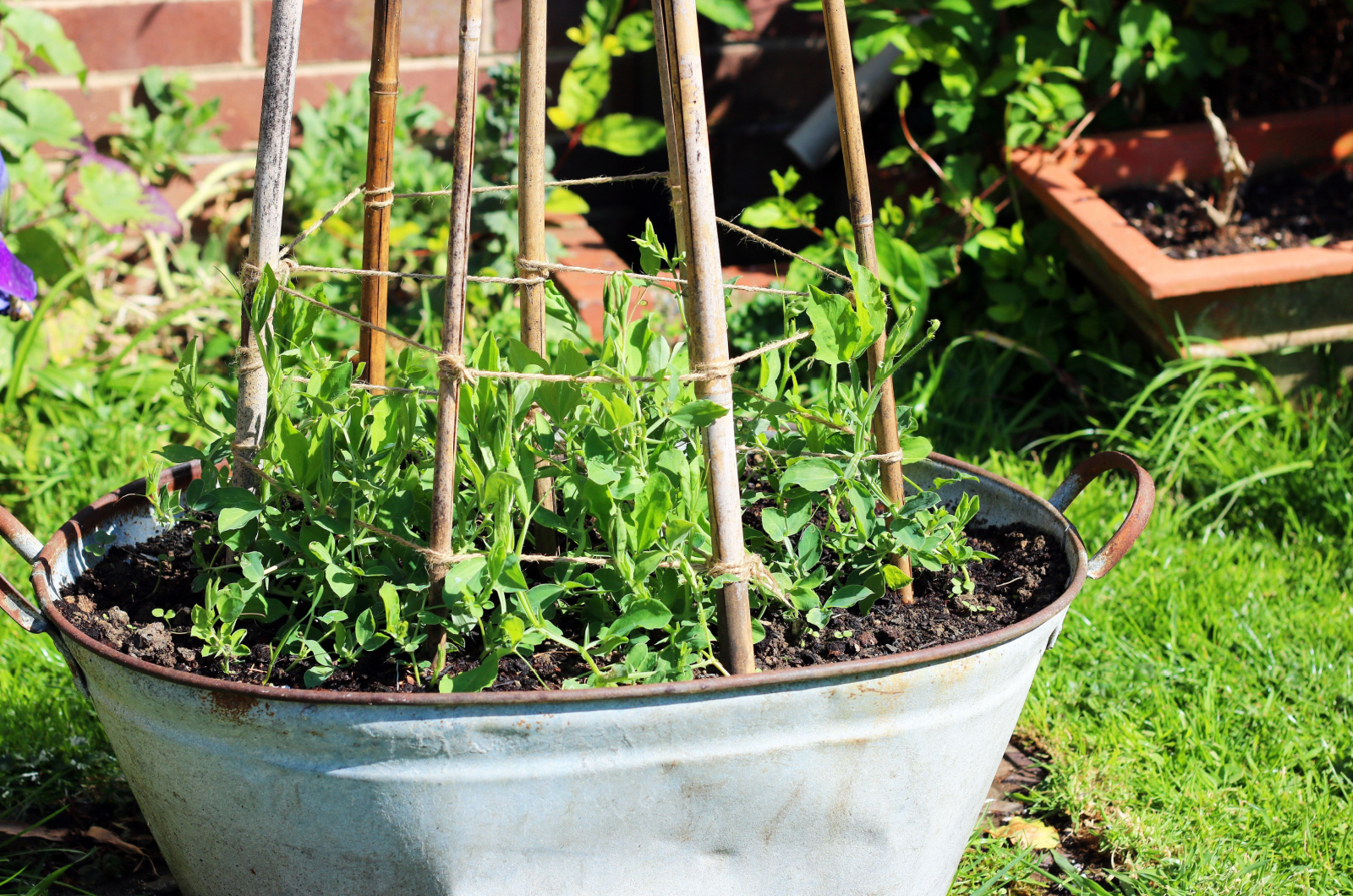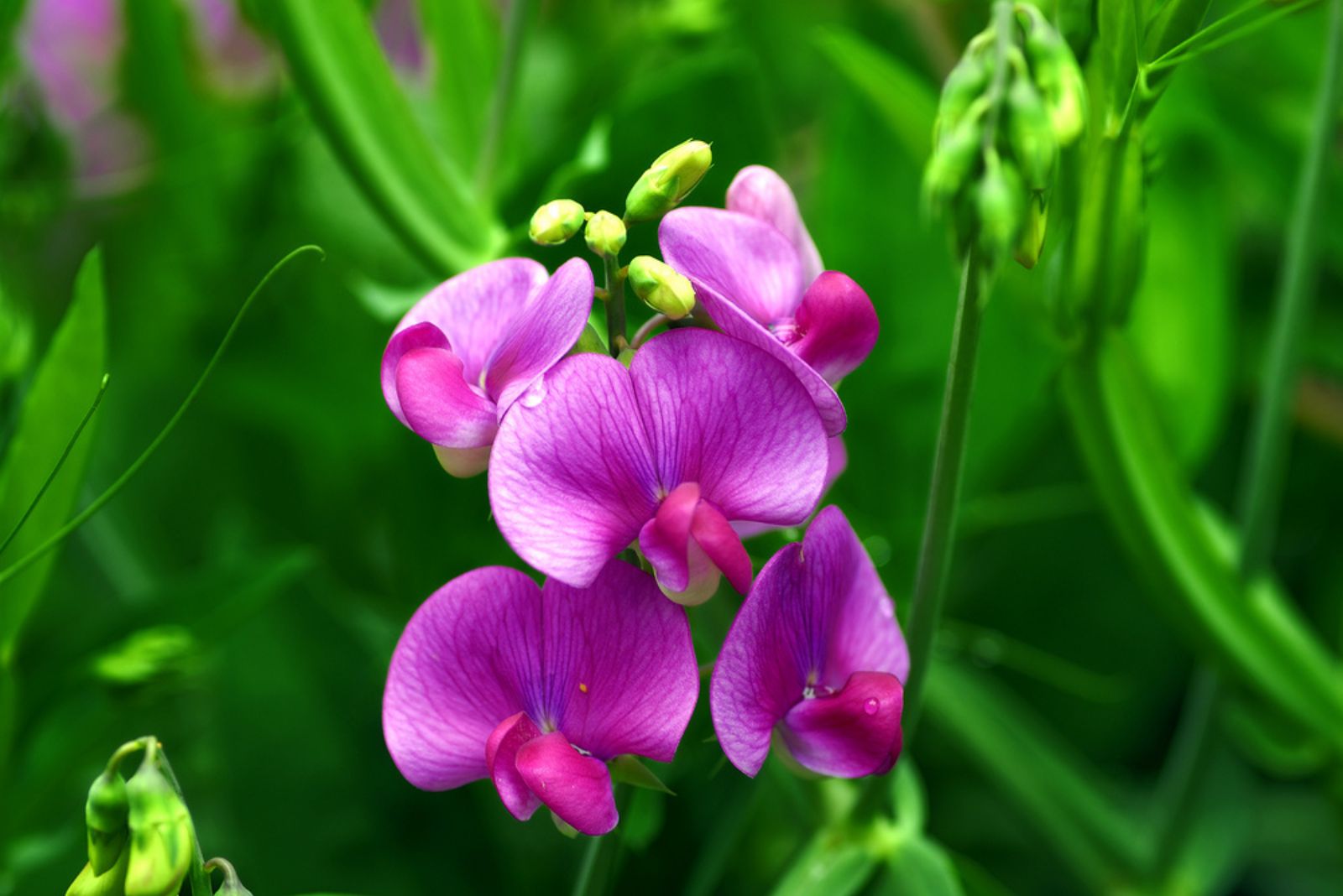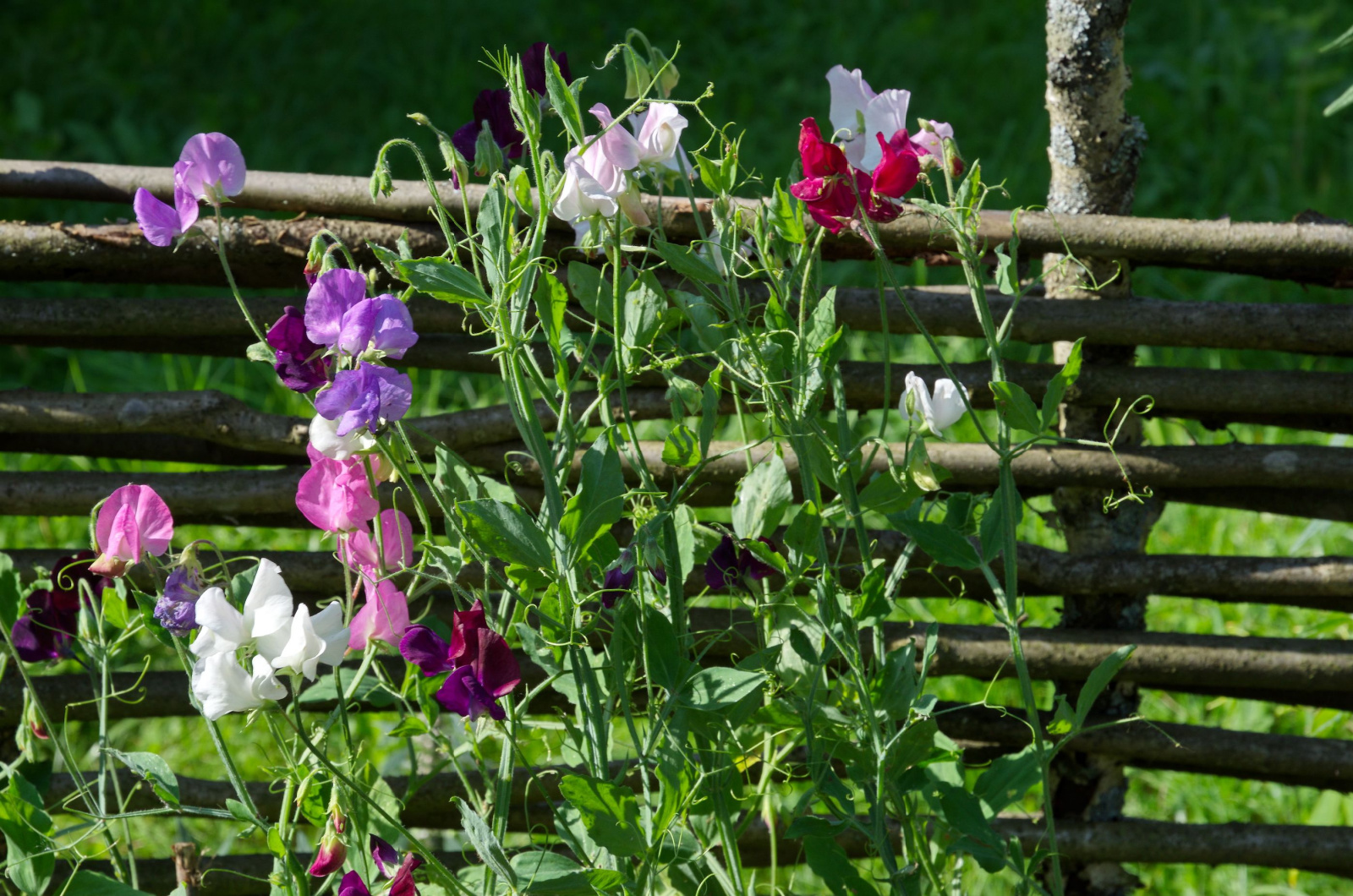Sweet peas are an indispensable addition to any garden during hot summer days. They can be grown in pots, rows, over teepees, and in cut flower patches.
Sweet peas are adored for their delicate, pastel flowers that produce enticing fragrances. They also attract pollinators like wild bees, bumble bees, and honey bees – all of which are necessary for pollinating plants in your garden.
In this article, we are going to share some tips on how to plant and grow sweet peas. Stay tuned!
Planting Tips
You can’t just sow sweet pea seeds anywhere and call it a day. In fact, you should wait for the perfect planting time, follow a specific planting technique, and then pinch out sweet peas later on.
Luckily, we are here to help you!
Let’s cover all the planting techniques to get you prepared for growing sweet peas.
When To Plant Sweet Pea Seeds
Sweet pea seeds are usually sown in the fall or in the spring. If you sow them in October, you can expect flowering around April (if you are growing them in polytunnels). In case you plant them in February, flowering should occur from late June and through July.
Fall sweet peas will develop strong roots over winter, so you can plant them outside once the spring comes. Their little seedlings will survive in a polytunnel or greenhouse (as long as they are protected from cold temperatures).
How To Sow Sweet Pea Seeds
Don’t worry, sowing sweet pea seeds isn’t anything overwhelming. Sow them into pots that are two or three times deeper than usual seed trays because they are legumes that have vigorous root systems.
You can score them with a paring knife to promote quick germination or you can soak them overnight; however, this is not necessary because they will germinate, only at a slower pace.
Plant seeds one knuckle deep in well-draining, peat-free compost. Put the trays somewhere cool and light where rodents can’t get to them – you can cover the trays with lids to keep them safe.
You might also be interested in: 16 Planting Mistakes Gardeners Make In Their Vegetable Patches
How To Pinch Out Sweet Peas
Once the baby plant has produced two sets of true leaves, it’s time to pinch them out. This will trigger the plant to grow vigorously, producing three leading stems and a lot of plant material that can be cut. You can use snips or secateurs, just make sure that they are clean.
You can pinch again after the bushy side shoots have grown, leaving one strong stem to grow up a string in a cordon fashion. This will lead to producing long flower stems and enormous flowerheads.
However, this step is not necessary. If you want to have a bushy plant with a lot of material for cutting, then pinch them out.
Planting Out Sweet Peas
Now is the time to plant out your sweet peas!
Sweet peas prefer a sunny area and humus-rich soil that retains a lot of water. If you are growing your sweet peas in a row as opposed to in a teepee, it will be easier to dig a trench that is about 30 cm deep and wide. Make sure to fill out the trench with high-quality, thick compost.
If you are planting your sweet peas outside, you should first harden them off. Plant seedlings 30 cm apart so that they don’t end up competing for water and nutrients.
Water them thoroughly and add some general purpose fertilizer to boost their growth. You can use jute netting because they can easily cling to it with their climbing tendrils. Plus, you can simply put it on a compost pile without having to remove wasted plants.
Also read: 10 Moss Pole Alternative Tools: Advantages And Disadvantages
Sweet Pea Plant Care
Sweet peas love the sun, so make sure to put them somewhere where they receive at least 6 hours of sunlight. Well-draining soil is crucial because they can easily get waterlogged.
They also appreciate consistently moist soil, so water them deeply when the soil feels dry to the touch. You should also mulch around the base of the plants to help retain soil moisture and suppress weed growth.
Growing Sweet Peas In Pots
If you don’t have enough garden space, you can always grow sweet peas in large, deep planters. However, you will have to water them more frequently since the planters dry out more easily.
Fill out the pots with extra-rich compost, add some plant food, and water it thoroughly!
Harvesting Sweet Peas
If you want your sweet peas to bloom continuously, it is crucial to harvest them as frequently as you can. The longest stems are seen in the first flush, however, they will only get shorter as the plant expands.
I would suggest you take off half the plant’s leaves and as many tendrils if you want to keep long stems. To secure your sweet pea plants to the netting as they grow, you’ll need extra string if you cut off their tendrils.
You might also be interested in: Top Tips For How And When To Harvest Sweet Potatoes
Common Sweet Pea Problems
Although sweet peas are easy to grow, there are still some issues that come along the way. For instance, they are prone to aphid infestations, which is why you should regularly check the plant.
In case of infestation, you can use some neem oil, epsom salt, or other natural remedies to get rid of them. Other predatory insects like hoverflies, ladybirds, and beetles can help you take care of aphids.
Additionally, overwintered seedlings may appear flea-bitten because they emerge from winter foliage and produce a bumper crop. Buds that stop developing in the spring can fall off easily – this is caused by variation in air temperature between day and night.
Sweet peas are also prone to rust and mildew, which is why they can sometimes turn brown. This usually occurs after the plants have been flowering for a couple of weeks. To prevent this, make sure that the air circulation is good and avoid overhead watering.
Also read: Here’s How To Spot And Treat Summer Plant Diseases

